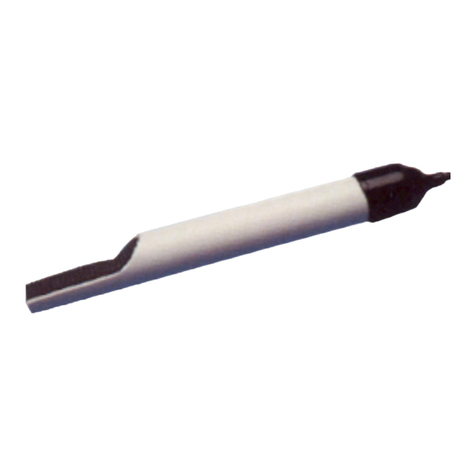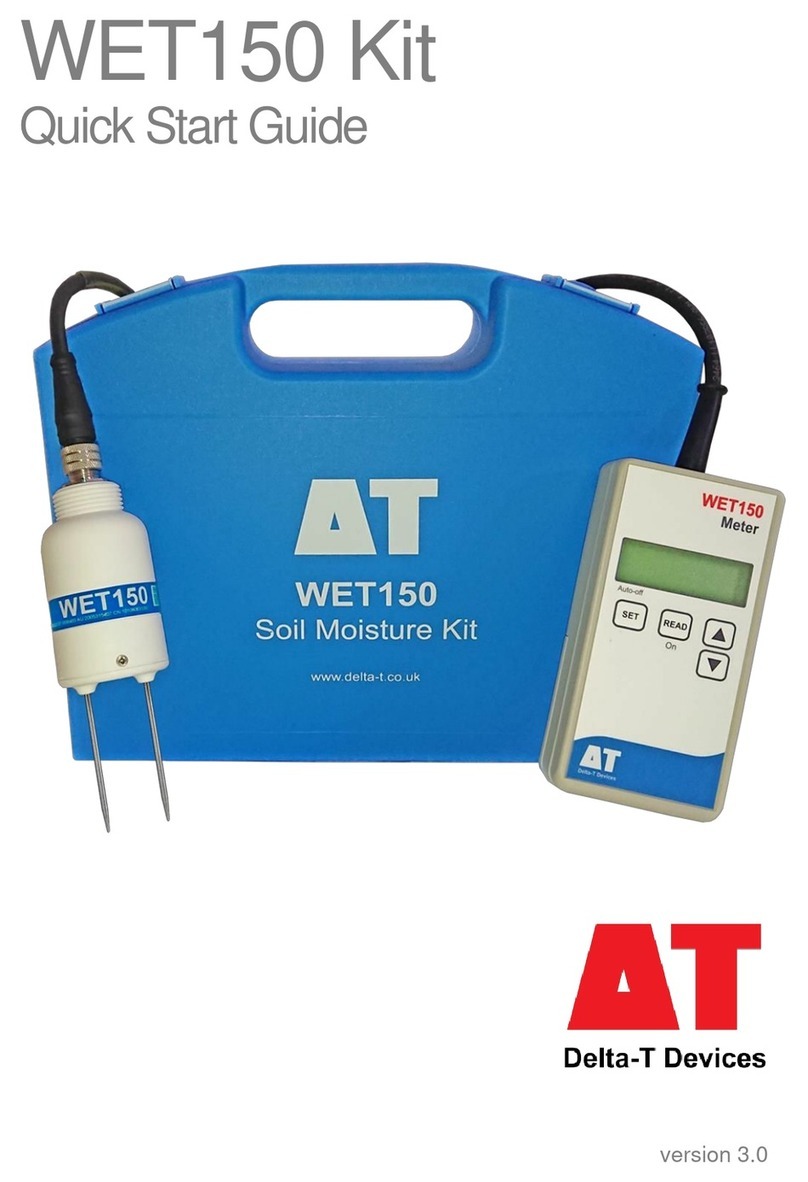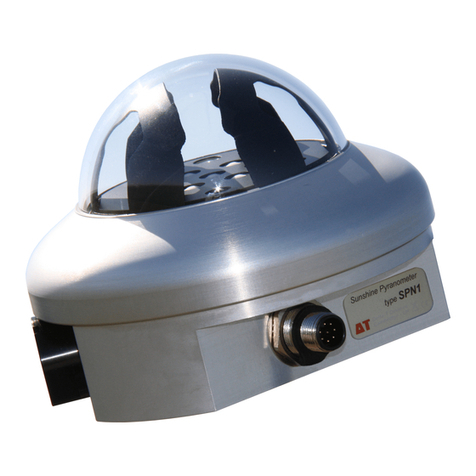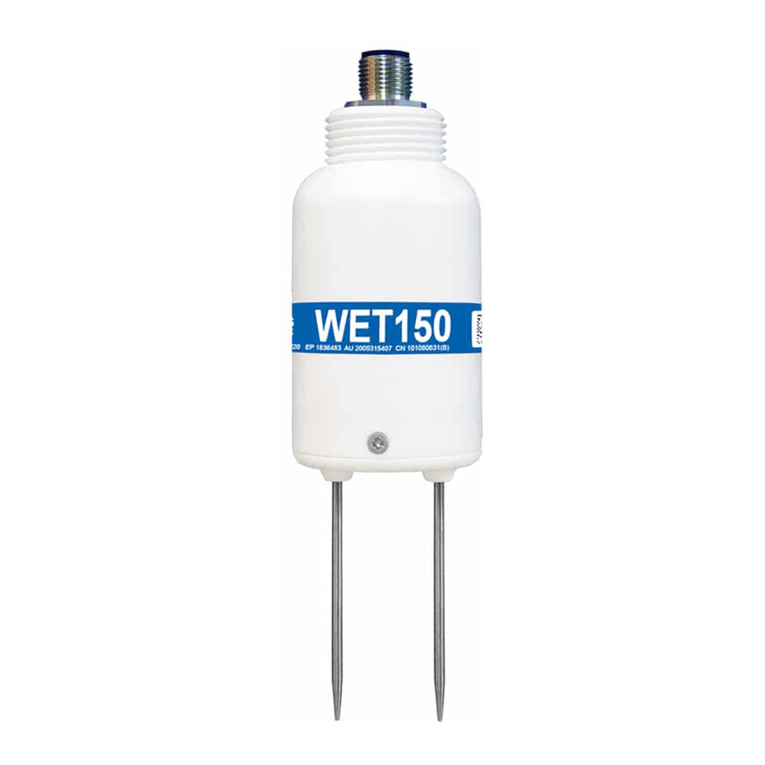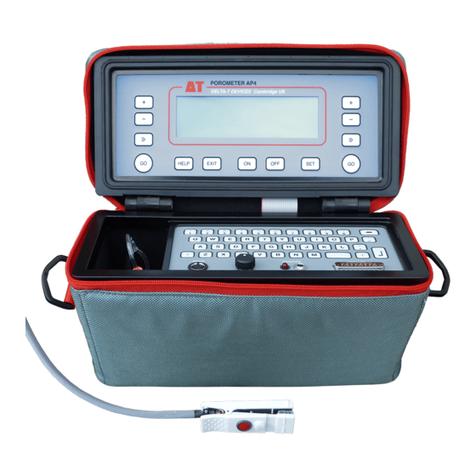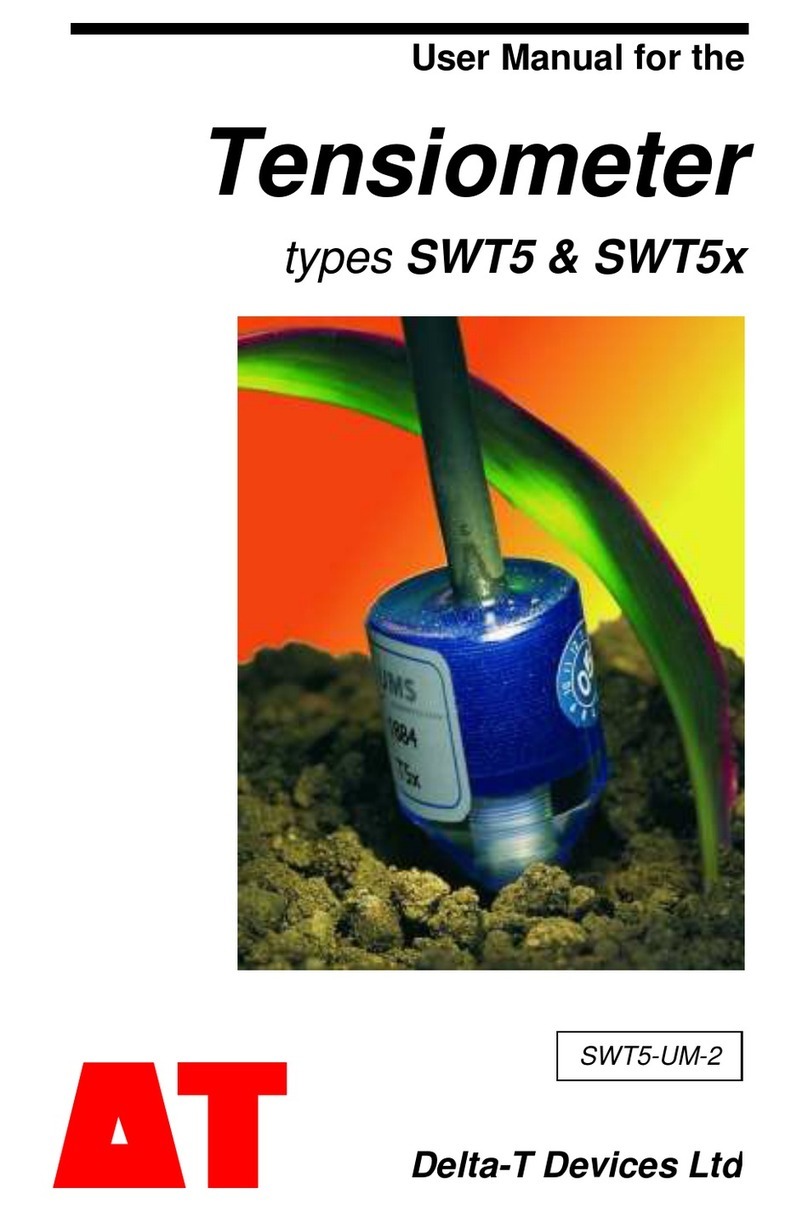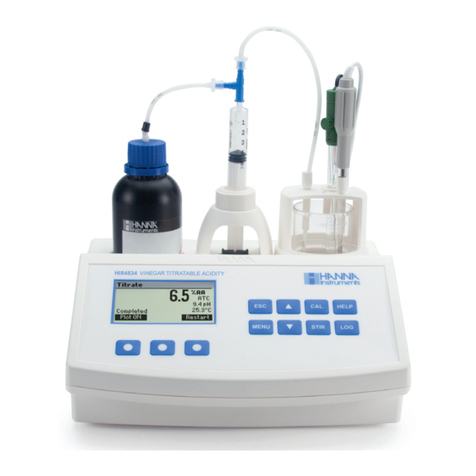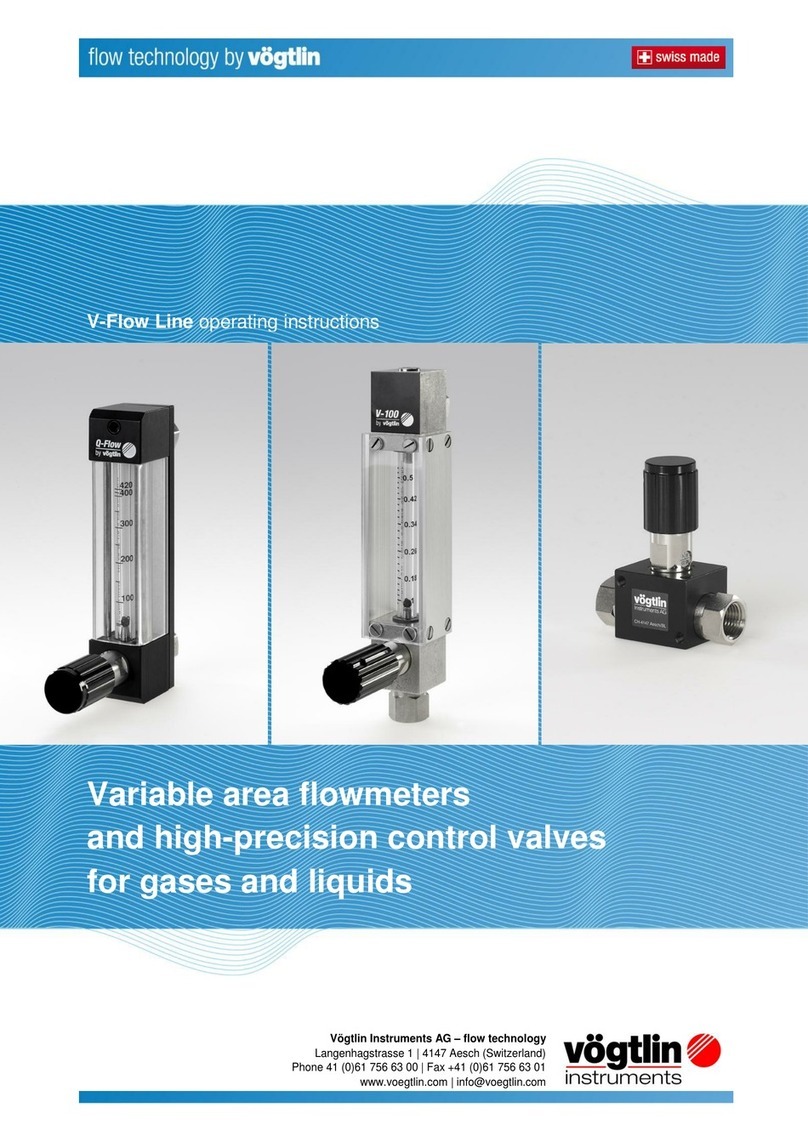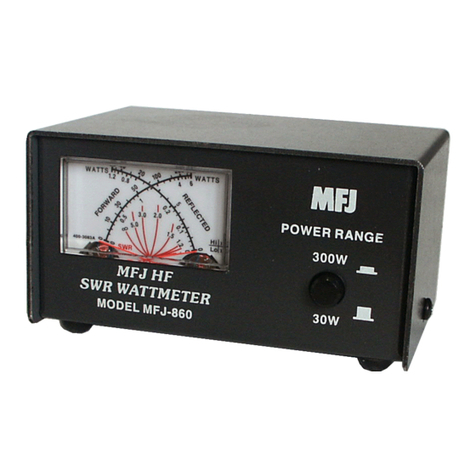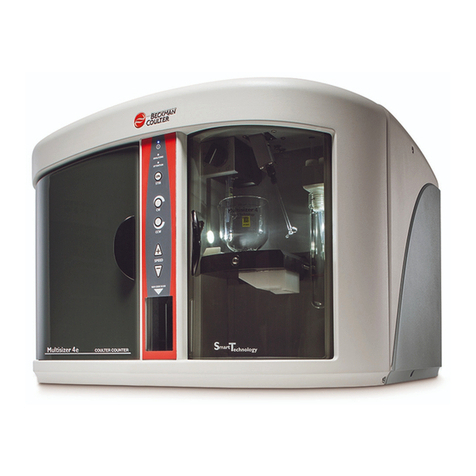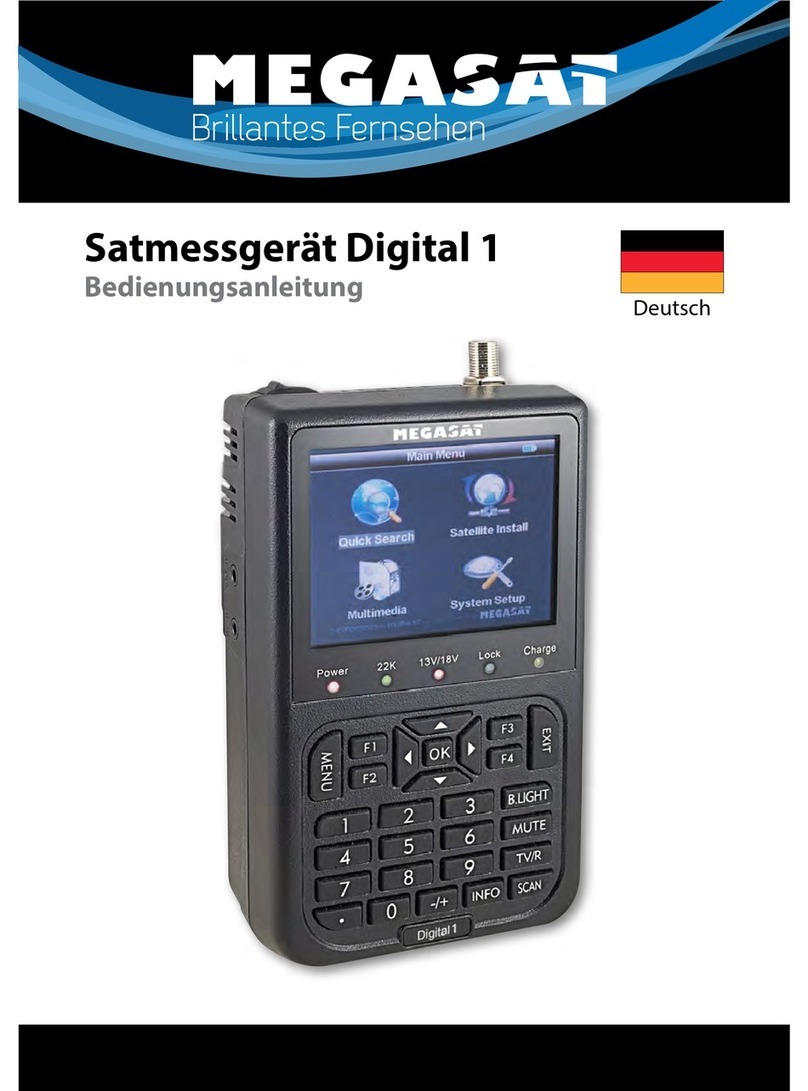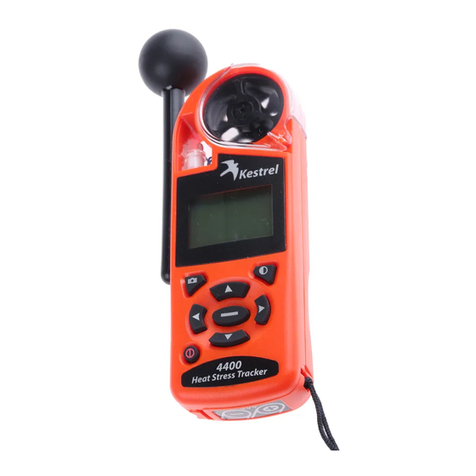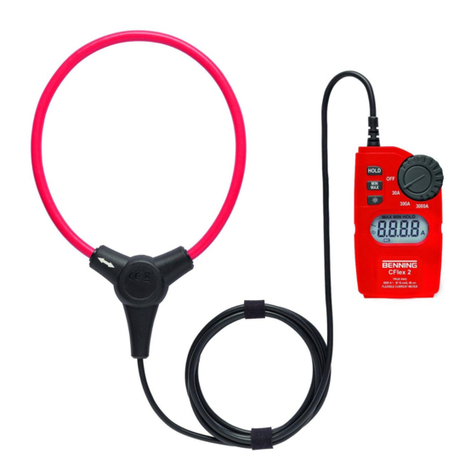Delta-T Devices PR2 User manual

User Manual for the
Profile Probe
type PR2
PR2-UM-3.0
Delta
-
T Devices Ltd

Notices
Copyright
All rights reserved. Under the copyright laws, this manual may
not be copied, in whole or in part, without the written consent of
Delta-T Devices Ltd. Under the law, copying includes translation
into another language.
Copyright © 2004, Delta-T Devices Ltd.
Patent pending
The Profile Probe has been developed by Delta-T Devices and
uses novel measurement techniques, patent pending.
CE conformity
The Profile Probe type PR2 conforms to EC regulations
regarding electromagnetic emissions and susceptibility when
used according to the instructions contained within this user
manual, and is CE marked by Delta-T Devices Ltd.
Design changes
Delta-T Devices Ltd reserves the right to change the designs
and specifications of its products at any time without prior notice.
User Manual Version: PR2-UM-3.0 Jan 2008
Delta-T Devices Ltd. Tel: +44 1638 742922
130, Low Road Fax: +44 1638 743155
CAMBRIDGE CB25 0EJ Web: www.delta-t.co.uk
UK

Contents
Introduction 4
Description 4
Parts list 6
Care and safety instructions 7
Routine maintenance 7
PR2 Cleaning and Chemical Avoidance
Instructions 8
How the Profile Probe works 9
Operation 10
Preparation for reading 10
Insert the Profile Probe 11
Portable monitoring 12
Record readings with a data logger 13
Calibration 17
Conversion to soil moisture 19
Reading accuracy 22
Troubleshooting 24
Problems 24
Technical reference 26
Specifications 26
Performance 27
Definitions 29
References 31
Technical Support 32
Soil-specific calibration 34
Laboratory calibration non-clay soils 35
Laboratory calibration for clay soils 37
Field calibration 40
Index 43

Introduction
Description
The Profile Probe measures soil moisture content at different
depths within the soil profile. It consists of a sealed
polycarbonate rod, ~25mm diameter, with electronic sensors
(seen as pairs of stainless steel rings) arranged at fixed intervals
along its length.
When taking a reading, the probe is inserted into an access
tube. The access tubes are specially constructed thin-wall
tubes, which maximise the penetration of the electromagnetic
field into the surrounding soil.
The output from each sensor is a simple analogue dc voltage.
These outputs are easily converted into soil moisture using the
supplied general soil calibrations or the probe can be calibrated
for specific soils.
Advantages
The Profile Probe is dual-purpose
each probe can be used both for portable readings from
many access tubes and for installation within one access
tube for long-term monitoring.
Fully sealed and robust.
High accuracy: ±4%.
Easy installation with minimal soil disturbance.
Large sampling volume ~ 1.0 litres at each profile depth.
olts
Works reliably even in saline soils.
Simple analogue output, 0 to ~1.0 V
4zIntroduction Profile Probe User Manual 3.0a

PR2/6 and
PR2
/
4 in
so
i
l
Electromagnetic
fields extend into
the soil and detect
soil moisture
Sensor 1
Pair of
sensor rin
g
s
1 metre
Profile Probe User Manual 3.0a Introduction z5

Parts list
Your consignment may have the following parts:
Part Sales Code Description
PR2/4 with 4 sensors (as
shown) or PR2/6 with 6
sensors. Both supplied in
protective tube, with spare o-
rings and centring springs
Profile Probe PR2/4
or
PR2/6
Access tube spacer Corrects PR2 depths when
access tubes are mounted
flush with soil surface
SPA1
Spares kit
PR2-SP
Cleaning kit Cleans access tubes
AT-CR1-
Bag Carrying bag for PR2
PR-CB2
Access tubes Short or long fibreglass tubes
suitable for PR2/4 or PR2/6,
including cap, bung and
collar.
ATS1
or
ATL1
Augering equipment - See Augering Manual
Insertion equipment - See Augering Manual
Extraction equipment - See Augering Manual
Meter Moisture meter plus
accessories
HH2
Data logger 6-channel data logger
optimised for PR2,
DL6
or or
DL2e General purpose multi-
channel logger adaptable for
many logging needs.
Cables 1.5m to HH2
PRC/d-HH2
5m to DL6
PRC/M12-05
5m to DL2e or other loggers
PRC/w-05
5m, 10m and 25m extension
cables (PRC/M12-05 and
EXT/M12-10 are identical)
EXT/M12-05
EXT/M12-10
EXT/M12-25
6zIntroduction Profile Probe User Manual 3.0a

Care and safety instructions
Keep your PR2 in its protection tube and fit the
connector cap when the probe is not in use. The Profile
Probe should be stored in a dry environment (definitely
non-condensing), and protected from sharp blows
Earth yourself on the metal connector before touching
the detector rings to avoid any possibility of damage by
electrostatic discharge.
Don’t lay the PR2 in a puddle because water may creep
under the rings – if you suspect this has happened warm
gently (< 50°C) for 24 hours.
minimise any electrical interference with other equipment.
Lay as much of the cable as possible along the
surface of the soil when taking a reading in order to
Routine maintenance
.
into an
e
ould be returned for routine re-calibration every 5
years.
Periodically examine the o-rings and centring springs
They should be kept clean, and if they show any signs of
damage, replace them. Pay attention particularly to the
lowest centring spring when inserting the PR2
access tube – a gentle twisting action helps.
The Profile Probe should be periodically recalibrated.
You should run a simple annual check on the calibration
(see the Troubleshooting section) and contact your local
Delta-T representative if there is a problem. Otherwise th
PR2 sh
Profile Probe User Manual 3.0a Introduction z7

PR2 Cleaning and Chemical Avoidance
Instructions
The PR2 shaft is made of polycarbonate plastic which is an
exceptionally strong material, and it can withstand bending
forces far in excess of anything likely to be encountered in
practice. However, polycarbonate can develop stress cracking
when exposed to certain chemicals. Such stress cracking greatly
weakens the polycarbonate and may lead to brittle fracture of the
shaft, even at very low stresses.
It is important to follow these guidelines. Failure to observe these
precautions can damage the probe and may invalidate the
warranty.
Clean the probe in use if necessary by wiping with damp
plain paper towels.
Use only clean water to damp the paper. Do not use
chemicals or cleaning agents of any sort in the water.
Never use any chemical solvents or cleaners on the probe,
or near to it. Avoid strong chemical vapours, especially
during probe storage.
, allow
is thoroughly dry before storing it in
the protection tube.
Do not immerse the probe in water. If this happens
the probe to dry in warm air for at least 24 hours.
Make sure the probe
8zIntroduction Profile Probe User Manual 3.0a

How the Profile Probe works
Before you rush out and hammer your access tubes into the soil,
it will help to understand a little about how the Profile Probe
works:
When power is applied to the Profile Probe...
...it creates a 100MHz signal (similar to FM
radio).
The signal is applied to pairs of stainless steel
rings....
... which transmit an electromagnetic field
extending about 100mm into the soil.
The field passes easily through the access tube
walls, but less easily through any air gaps.
The water content of the soil surrounding the
rings...
...dominates its permittivity.
ε(A measure of a material’s response to
polarisation in an electromagnetic field. Water
has a permittivity ≈81, compared to soil ≈4 and
air ≈1)
The permittivity of the soil has a strong
influence on the applied field…
Vout …resulting in a stable voltage output that…
...acts as a simple, sensitive measure of soilSoil Moisture
moisture content.
22 %
Profile Probe User Manual 3.0a Introduction z9

Operation
Preparation for reading
Install access tubes
The Profile Probe must be used within an access tube. The
process of augering holes and installing access tubes is
described in the Augering Manual.
Equipment
You may require the following equipment for a site visit:
PR2 in
p
rotective tube
Access tube spacer
Spare
collars
caps
centring
springs
If setting up
logging:
Data logger (DL6 or
DL2e) and cable
For portable
reading: HH2
meter and
cable
Roll of paper
towels
Cleaning rod
10 zOperation Profile Probe User Manual 3.0a

Insert the Profile Probe
Remove the tube cap and check for damp
probe
rod
o-ring
centring spring
If the access tube has been left empty for several weeks, check
for condensation by threading paper towel into the slot in the
cleaning rod and pushing this to the bottom of the tube. If there
is any water present, you will need to dry the tube thoroughly.
Check the centring springs
Remove the PR2 from its protective tube.
The Profile Probe is fitted with centring springs so
that the probe is correctly centred within an access
tube. They must be fitted and working properly for
the probe to take accurate readings. Each centring spring
(coiled spring) sits on top of an o-ring (see illustration).
Fit spacer (if required)
If your access tube has been installed flush with the soil surface,
you will need to fit the access tube spacer (SPA1). Slide the
spacer over the tip of the probe and push all the way up past the
top o-ring.
Insert the Profile Probe
Take care as the first centring spring is pushed into the tube not
to pinch the spring unevenly against the side of the tube. A
slight twisting motion as the spring goes in will help protect it.
Align the probe
The probe should be aligned consistently each time it is inserted,
using the alignment marks on the access tube and the label on
probe handle.
If you want to maximise the sampling at each location, we
suggest that you take the average of three readings at each
location, with the tube rotated through 120° each time – the
three small screw heads can be used for this purpose.
Ensure that the Profile Probe is pushed all the way down over
the top o-ring.
The PR2 is then fully sealed in its access tube and ready either
for immediate reading or for attaching to a logger for extended
monitoring.
Profile Probe User Manual 3.0a Operation z11

Portable monitoring
Set up the HH2 meter
Connect the Profile Probe to your HH2
using the supplied PRC/d-HH2 cable
Press Esc to turn the meter on, and if
necessary press again until it displays:
Delta-T Devices
ΔTMoisture Meter
Make sure the meter is set to read from a PR2:
Press Set and scroll down to the Device option.
o:
.
Press Set again and scroll down t
Press Set to confirm this choice
Device:
vPR2
If you intend to store readings, you may find it useful to define
each reading by setting a plot label and sample number –
accessed by pressing Set and scrolling to the Data option.
See Calibration section for advice on setting Soil Type and
Soil Set-Up.
For other options, refer to the HH2 User Manual.
Taking readings
Insert the Profile Probe into an access tube.
Press Read to take a reading - it takes about 3 seconds.
Press the arrow keys to view
readings from other depths. You
can choose different units from
the Display option.
PR2Store?
22.7%vol v100mm
Press Store to save or Esc to discard the reading.
If you want to maximise the sampling volume, take 2 further
readings with the probe rotated through 120° each time.
Remove the PR2, replace the access tube cap and move on to a
new site….
Viewing stored readings
If you have saved data, connect the HH2 to your
PC and run HH2Read to retrieve the readings.
12 zOperation Profile Probe User Manual 3.0a

Record readings with a data logger
The Profile Probe has been designed to make its use with data
loggers straightforward. It is particularly simple to use with the
DL6 data logger as they have been designed to work together.
DL6 connection and configuration
You will need access either to a PC with DL6 Control Panel
software installed, or to a Pocket PC with Pocket DeltaLINK.
Connect the Profile Probe
The PR2 can be connected directly to the DL6 with the supplied
cable. Extension cables can be added as required up to 100m.
Configure the DL6
Using Pocket DeltaLINK or DL6 Control Panel:
Click on Connect to Logger and for the Programs
window, then in the Sensors tab set Channel 1 either to
PR2/4 or PR2/6.
Set the Recording Interval in the Main tab…
… there are many other options - refer to the DL6 user
manual for details.
When finished, click on to install the program in the
logger.
Profile Probe User Manual 3.0a Operation z13

To check the connections, select the Sensors tab and click on
to see the PR2 readings.
Start logging
When ready click on to select the Logger window and Start
to start logging…
Collect the data
…later when you want to collect the data, connect to the DL6
and click on to select the Dataset window from which you
can retrieve and display all stored readings.
See the DL6 User Manual for configuration options.
DL2e connection and configuration
The Profile Probe is fitted with a screened 8-way connector.
When used with a DL2e this should be connected using the
PRC/w-05 cable, which provides the following connections.
Cable Function Notes
Colour
Power V+
Red 5-15V DC, PR2/4 80mA, PR2/6 120 mA.
Power 0V is cable screen.
Power 0V
Black
Signal COM Common signal output
Green
Top sensor, 100 mm depth
Yellow Vout 1
Grey Vout 2
Brown Vout 3
White Vout 4
Blue Vout 5For PR2/4, Vout 5 and 6 are not
connected.
Pink Vout 6
Notes:
1. These connections are not the same as the PR1.
2. The cable screen serves as the power return and is given black
insulation.
3. Do not connect the Power 0V and Signal common at the
logger. This will create reading errors.
14 zOperation Profile Probe User Manual 3.0a

This diagram shows the connections for Profile Probe sensor 1
connected to channel 1 of a DL2e in differential mode, and
powered through the logger’s internal power supply.
Further details can be found in your Ls2Win installation. The
DL2 Program Editor contains on-line help and an application
note on each sensor type.
Four DL2e sensor codes are supplied for the PR2:
P2M provides a conversion from mVolts to soil water content (in
m3.m-3) suitable for general mineral soils.
P2O converts to m3.m-3 for general organic soils.
P2C converts to %vol for general mineral soils.
P2D converts to %vol for general organic soils.
Note: All DL2e data in m3.m-3 units is restricted to 0.01 m3.m-3
resolution. The P2C and P2D codes using %vol show much
better resolution, and are preferred.
Power supply
Profile Probes types PR2 require 5.5 to 15 Vdc power. Power
can be applied continuously, or via a warm-up relay for greater
economy of power consumption.
You can power Profile Probes directly using DL2e internal
batteries. However, if several probes are to be used, or if the
data logger has to supply significant power to other sensors or
accessories, we recommend powering the data logger and
sensors from an external power supply.
The DL2e has two warm-up relay-controlled outputs. Each relay
can typically power up to 12 PR2/4 or 8 PR2/6 Profile Probes.
Note: For best economy the Profile Probe should be powered
up using a 1 second warm-up time.
Link the green
wire to the
minus –
terminal on
every channel
used by the
PR2
Profile Probe User Manual 3.0a Operation z15

Other data loggers
The connections and power requirements will usually be the
same as for the DL2e.
If you simply want to log the sensor voltages directly, they can
be treated as differential voltage sources of range 0 – 1.1 V DC,
and the data logger should be configured accordingly.
Warning: we recommend connecting Profile Probes as
differential voltage sensors because they are powered sensors.
Although you can measure Profile Probes single-ended, this will
introduce an additional measurement error that depends mainly
on the length of your cable. It may also have undesirable side
effects on the apparent reading from other sensors attached to
the data logger.
You can either convert the data to soil moisture units after
logging, or program your data logger to convert the output
automatically before logging the data, using the information
supplied in the Conversion to Soil Moisture section.
16 zOperation Profile Probe User Manual 3.0a

Calibration
The Profile Probe detects soil moisture by responding to the
permittivity (ε′) of the damp soil (see illustration on page 8) – or
more accurately to the refractive index of the damp soil, which is
~ equivalent to √ε.
As a result, the performance of the Profile Probe is best
understood if it is split into these two stages:
Soil calibration: soil moisture (θ) determines √ε
Profile Probe response: √ε determines PR2 output (Volts)
Soil calibration
Soil calibration
0
1
2
3
4
5
6
0 1020304050
Water content of soil (%vol)
√ε
damp soil
Slope (a1)
Soil offset (a0)
This method of detection is very sensitive and accurate, but of
course soils can be enormously different one from another.
The soil offset and the slope of the line in the graph above both
depend slightly on soil type, varying with density, clay content,
organic matter etc.
This can be usefully summed up in a simple equation describing
the relationship between √ε and the soil water content, θ, which
contains two parameters (a0and a1) that reflect the influence of
the soil:
θε
×+= 10 aa [1]
The accuracy of your Profile Probe readings can be improved if
you choose appropriate values for a0and a1. This is usually very
simple…
Profile Probe User Manual 3.0a Operation z17

Generalised calibrations
Most soils can be characterised simply by choosing one of the
two generalised calibrations we supply, one for mineral soils
(predominantly sand, silt or clay) and one for organic soils (with
a very high organic matter content).
a a
0 1
Mineral soils 1.6 8.4
Organic soils 1.3 7.7
These values have been used to generate the slope and offset
conversions and linearisation tables in the Conversion to soil
moisture section.
Soil-specific calibration
If it is important to work to higher accuracy, you may choose to
carry out a soil-specific calibration, but please bear this in mind:
For normal agricultural soils, if you use one of the generalised
calibrations, you can expect typical errors of ~ ±0.06 m3.m-3,
including installation and sampling errors.
If instead you use a soil-specific calibration, you can expect
typical errors of ~ ±0.05 m3.m-3.
As a guideline, we suggest that you only need to do a soil-
specific calibration if one of the following applies:
4Your soil is heavy clay, highly organic, or in some respect
“extreme”.
4You are working to high levels of accuracy, or you need a
controlled error figure rather than a “typical” error figure.
not
and the following do apply
8Your soil is very stony (insertion errors are likely to outweigh
the calibration errors)
8your soil cracks when it dries (again measurement errors
are likely to be higher than calibration errors)
The procedure for carrying out a soil-specific calibration is
detailed in Appendix A.
18 zOperation Profile Probe User Manual 3.0a

Profile Probe response
All Profile Probes have the same dielectric performance:
Profile Probe output
0
1
2
3
4
5
6
7
0.0 0.2 0.4 0.6 0.8 1.0
PR2 output (Volts)
√ε
PR2 readings
fitted curve
This relationship can be fitted very precisely up to ~ 0.5 m3.m-3
by the following polynomial:
[2]
65432 53.12168.35656.41342.23417.6753.5125.1 VVVVVV +−+−+−=
ε
and can be approximated by the following linear relationship:
V43.437.0 +=
ε
up to 0.3 m3.m-3 [3]
Conversion to soil moisture
Profile Probes can either be used to give instantaneous readings
of soil moisture using a hand-held meter, or they can be
connected to a data logger to record moisture data over time.
In either case you will probably want to configure the meter or
data logger to convert the Profile Probe output to soil moisture
content. Three data conversion methods can be used:
♦polynomial conversion
♦linear conversion (slope and offset)
♦linearisation table conversion
Profile Probe User Manual 3.0a Operation z19

Polynomial conversion
Combining the Soil calibration and Profile Probe response steps,
the conversion equation becomes:
3-3m.m
1
0
65432 ]53.12168.35656.41342.23417.6753.5125.1[
a
aVVVVVV
V
−+−+−+−
=
θ
where aand aare the calibration coefficients above.
0 1
For a generalised mineral soil this becomes:
3-3
65432
min 47.1446.4223.4991.2700.866.0057.0 VVVVVV +−+−+−−=
θ
m.m,
And for an organic soil:
3-3
65432 78.1532.4671.5344.3072.872.0023.0 VVVVVV
org +−+−+−−=
θ
m.m.
Slope and offset conversion
Combining the Soil calibration and linear Profile Probe response
equations:
[
]
1
0
43.437.0
a
aV
V
−
+
≈
θ
3-3 3-3
m, up to 0.3 m.m.m .
Using the values of aand a
0 1 for generalised mineral and organic
soils:
From probe V to: Slope Offset
m3.m-3 / V m3.m-3
3
m.m-3 0.528 -0.146
, Mineral soil
3
m.m-3 0.575 -0.121
, Organic soil
To convert data readings from volts, multiply by the slope and
add the offset. This gives readings in m3.m-3.
Linearisation table conversion
The following table of values is used for the DL2e logger sensor
codes P2M, P2O, P2C, P2D.
20 zOperation Profile Probe User Manual 3.0a
Table of contents
Other Delta-T Devices Measuring Instrument manuals
Popular Measuring Instrument manuals by other brands
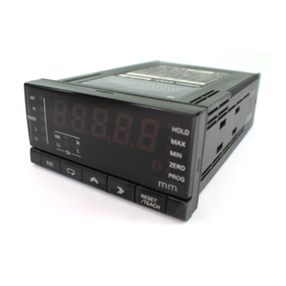
Omron
Omron K3NX manual
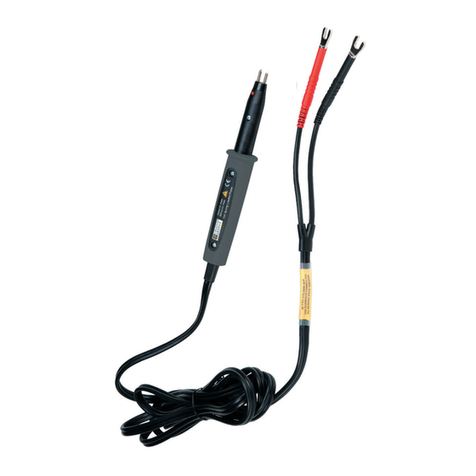
Chauvin Arnoux
Chauvin Arnoux Double retractable 10 A test probe user manual
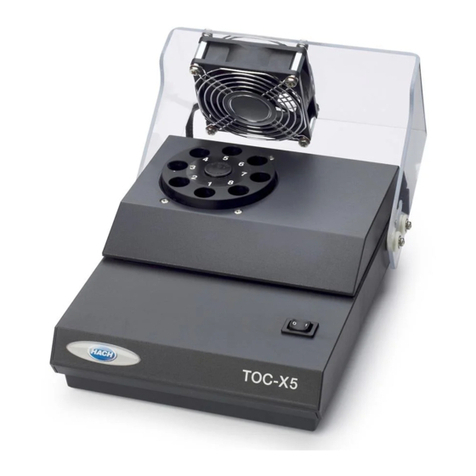
Hach
Hach TOC-X5 user manual
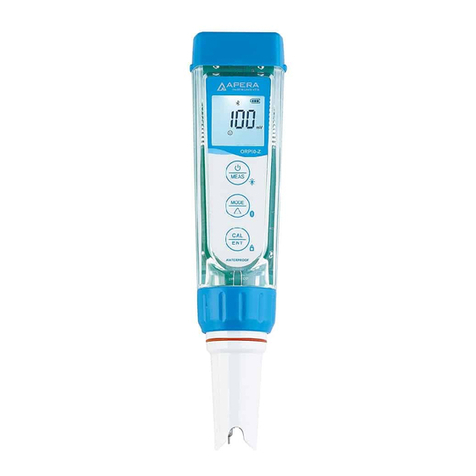
Apera
Apera ORP60-Z quick start guide
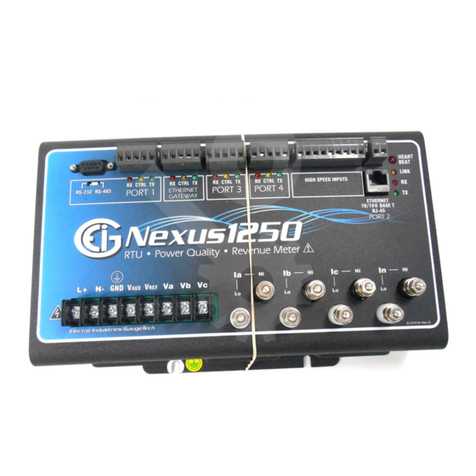
Electro Industries/GaugeTech
Electro Industries/GaugeTech Nexus 1250 Installation & operation manual
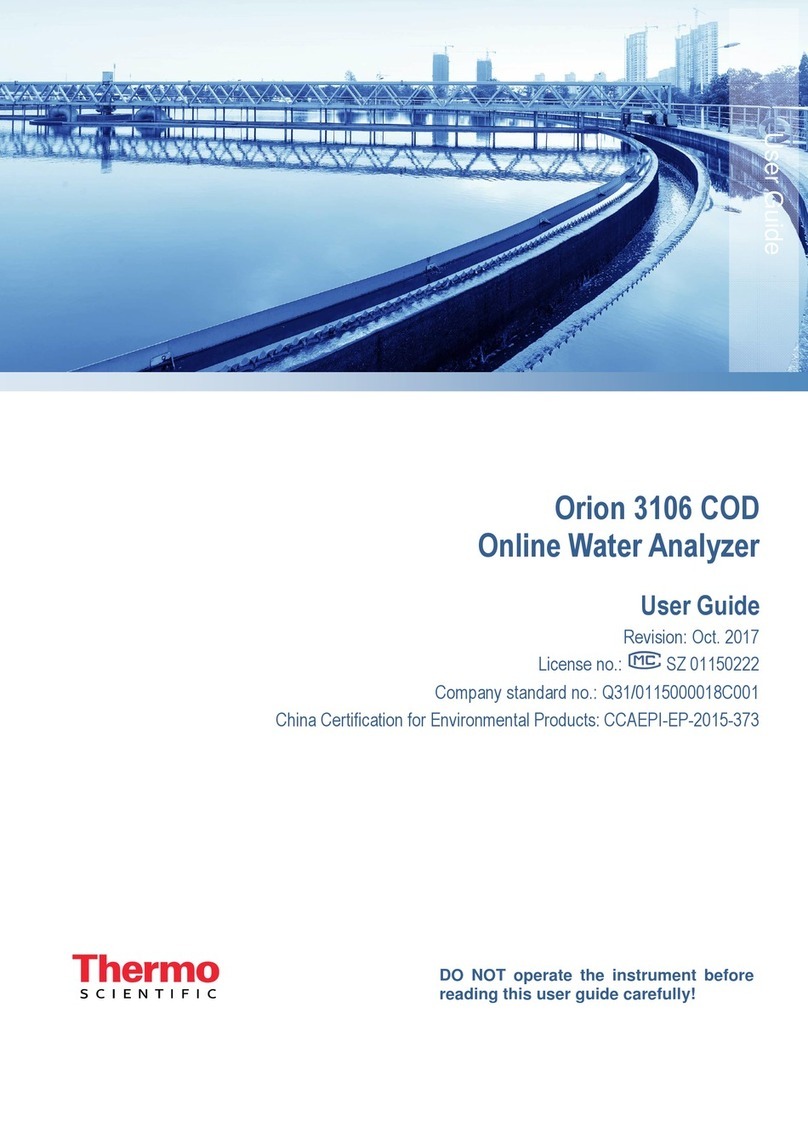
Thermo Scientific
Thermo Scientific Orion 3106 user guide
